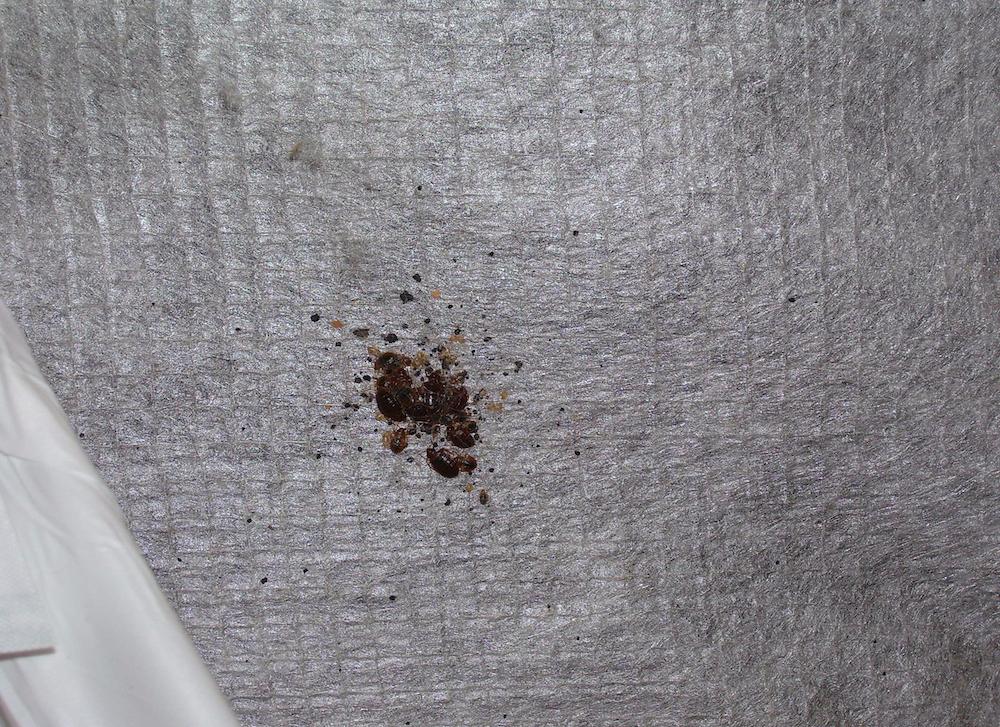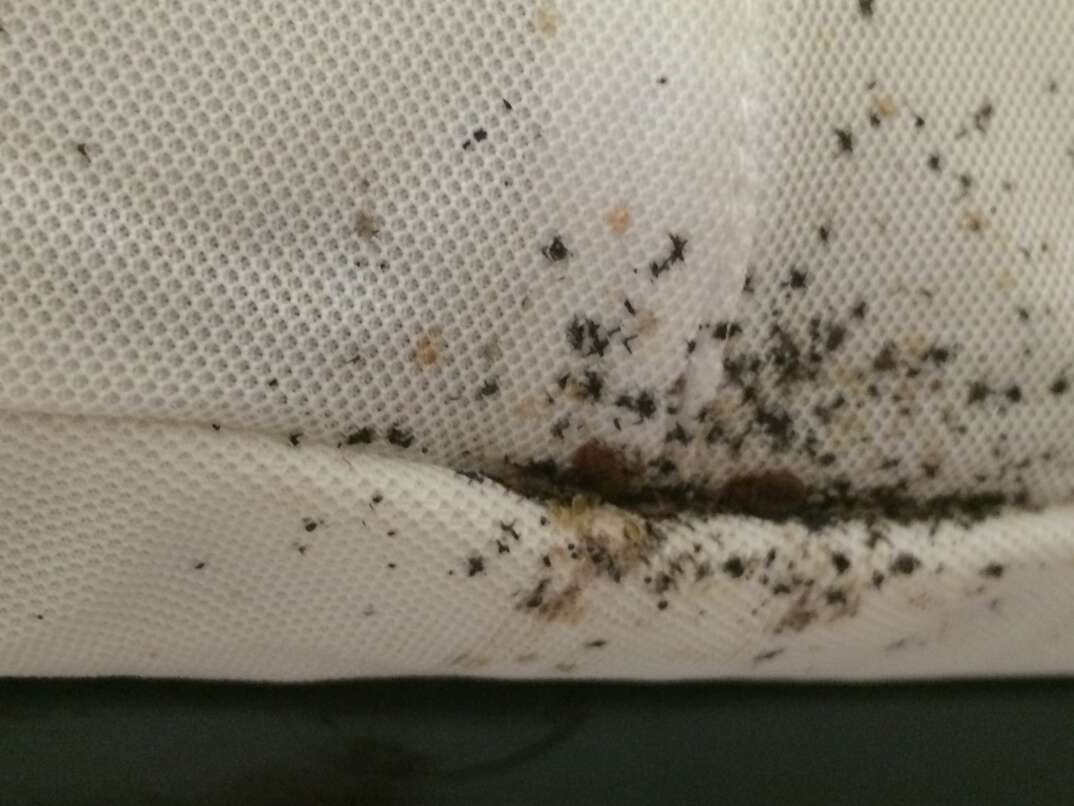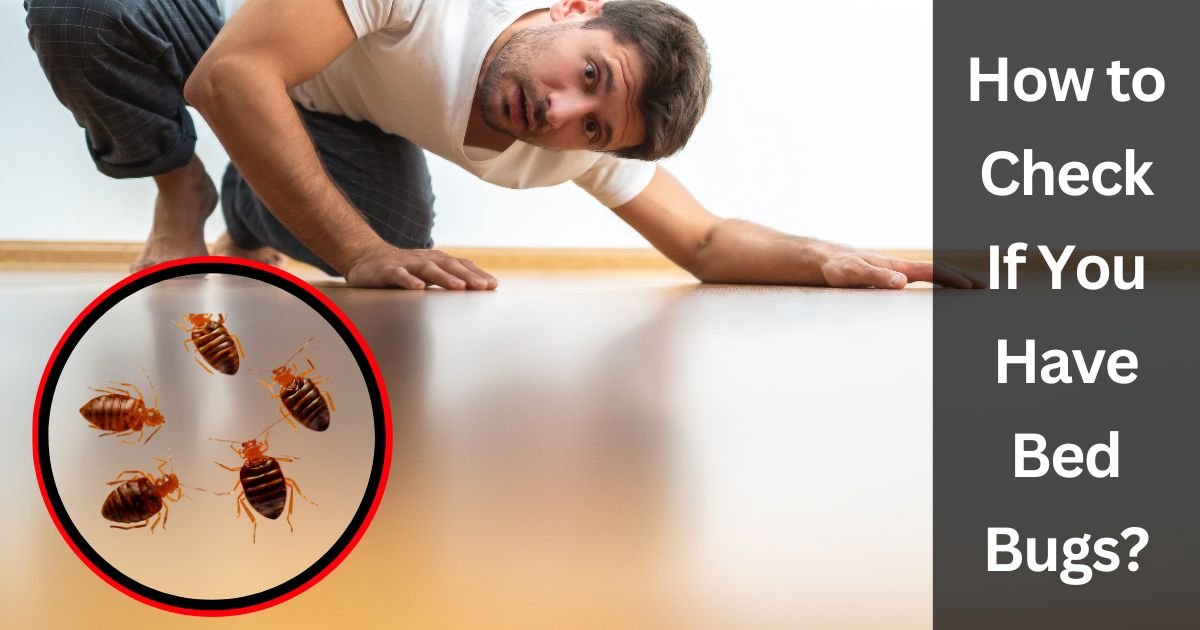To check if you have bed bugs, look for rusty or reddish stains on your sheets or mattresses, check the folds and crevices of your mattress and furniture for brown bugs, translucent eggshells, or reddish-brown stains. You can also look for live bed bugs and small dark spots on your bedding.
If you suspect an infestation, it’s important to act quickly and thoroughly inspect your home. Bed bugs can be a major problem, and they are notoriously difficult to detect. These tiny insects can infest your home and cause a range of issues, from itchy bites to allergic reactions.
If you’re worried that you might have bed bugs, it’s important to know how to check for them so that you can take action quickly. We’ll walk you through everything you need to know to identify a possible bed bug infestation and get rid of these pests for good. We’ll cover the signs of bed bugs, where to look for them, and what to do if you find evidence of an infestation.

Credit: www.orkin.com
Indicators Of Bed Bug Infestation
To check if you have bed bugs, look for rusty or reddish stains on sheets and mattresses caused by crushed bed bugs. Also, be on the lookout for dark spots, live bed bugs, and translucent eggshells. Carefully inspect all folds and crevices of your mattress and furniture with a flashlight for signs of a bed bug infestation.
Indicators of Bed Bug InfestationBed bugs are notorious pests that can cause sleepless nights and discomfort. Identifying bed bugs in your house is vital to prevent infestation. Some of the indicators of bed bug infestation are:Rusty or reddish stains on bed sheets or mattresses: These stains are caused by bed bugs being crushed while feeding on blood, or when they are simply moving around. These stains can be as small as a pinprick and may appear in clusters.Dark spots: These are usually excrement or fecal matter and look like small black dots. They can be found on the mattress, bed frame, headboard, or walls surrounding the bed.Live bed bugs: These are obviously visible and can be found in the seams and crevices of mattresses, box springs, bed frames, or other furniture around the house.If you notice any of these indicators, then it’s time to take action to prevent and treat the infestation. Remember, early detection is key to make the process less challenging.
Credit: www.homeserve.com
How To Inspect Your Bed For Bed Bugs
To check if you have bed bugs, start by inspecting your bed and box spring for rusty or reddish stains caused by crushed bugs, dark spots that are smaller than a pencil eraser, and live bed bugs. Use a flashlight to inspect crevices and folds, and look for translucent egg shells and reddish-brown stains on furniture.
Repeat the inspection regularly to detect bed bugs early on.
If you wake up with itchy bites or suspicious spots on your bedding, it’s possible that you have bed bugs. These sneaky pests can hide in the seams, cracks and crevices of your bed, mattress and furniture. Therefore, it’s essential to inspect your bed thoroughly and regularly for signs of bed bugs. Here are some simple steps to inspect your bed for bed bugs.Check The Seams
Check the seams, tufts, and folds of your mattress, box spring, and bed frame using a flashlight. Look for live bugs that will be reddish-brown, or apple seed-sized insects and exoskeletons that they have shed. You may also find small dark spots, which are the bed bug’s excrement or blood stains from crushed bugs. Check every inch of your mattress and bed frame, including the sides and underneath.Inspect The Box Spring
Inspect the box spring carefully using a flashlight. Pay close attention to the corners, seams, and folds as bed bugs love to hide in dark, tight spaces. A magnifying glass can come in handy too. Check for live bugs, exoskeletons, and dark spots.Use A Flashlight To Inspect All Crevices
Use a flashlight to inspect all the crevices in your bed frame, headboard, and footboard. Bed bugs can hide in screw holes, joints, and cracks in the wood. Therefore, it’s crucial to check every tiny gap using a flashlight. Be thorough, and don’t miss any potential hiding spots.In conclusion, inspecting your bed regularly is crucial to prevent bed bug infestation. By following these simple steps, you can identify bed bugs early and treat them before they become a severe problem. Remember to check your bedding, mattress, box springs, bed frames, and furniture regularly. Don’t hesitate to call a professional if you suspect bed bugs in your home.How To Inspect Other Furniture For Bed Bugs
When inspecting other furniture for bed bugs, use a flashlight to examine all seams, crevices, and joints. Be thorough and check couches, chairs, dressers, and other pieces thoroughly. Look for reddish-brown stains, translucent eggshells, or actual live bugs, and consult a professional if you find any signs of infestation.
Inspecting other furniture besides the bed is important to ensure the bed bugs are fully eradicated from your home. To start, you need to check all potential harborage sites. This includes cracks and crevices, seams, and folds. Bed bugs love hiding in tight places and they can travel easily from the bed to other furniture such as chairs, sofas, and cabinets. Inspect each item thoroughly to make sure you catch any bed bugs hiding out.To inspect other furniture, start by stripping off any visible covers or cushions and then working your way into the seams and folds. You can use a flashlight to help you spot any signs of bed bug activity. Check the legs of your furniture as this is another area bed bugs can hide out and breed. If you find anything suspicious, vacuum the furniture thoroughly and dispose of the vacuum bag immediately.Below is a table of potential harborage sites to check when inspecting furniture for bed bugs:| Potential Harborage Sites | | — | | Cracks and crevices | | Seams and folds | | Legs of furniture | | Upholstery and cushions | | Drawers and shelves | | Electrical outlets and switches | | Picture frames and mirrors | | Wall hangings and decorations |In summary, inspecting other furniture besides the bed is crucial to ensure you get rid of all bed bugs from your home. Check all potential harborage sites thoroughly, including cracks, seams, folds, and legs of furniture. Remember to vacuum any suspicious furniture and dispose of the vacuum bag immediately. By following these steps, you can ensure your home is bed bug-free.What To Do If You Find Bed Bugs
To check if you have bed bugs, look for rusty or reddish stains on your bedding caused by bed bugs being crushed and dark spots about the size of a period from their excrements. Check for live bed bugs with a flashlight in the folds and crevices of your mattress and furniture.
If you find bed bugs, it’s essential to take necessary steps to eliminate them immediately.
What to do if You Find Bed BugsDiscovering bed bugs in your home can be unsettling, but taking prompt action is essential. Below are some steps you can take if you find bed bugs.Isolate infested items Once you spot the bugs, it’s important to isolate the infested items to prevent the bugs from spreading. Remove all items, including bed linens, pillowcases, and washable clothing, and store them in tightly sealed plastic bags. Make sure to label the bags, indicating that they contain bed bug-infested items.Contact a professional Contacting a professional pest control company is the best way to eliminate bed bugs. They have the necessary equipment and expertise to get rid of bed bugs effectively and safely. The professional will assess the situation and recommend a treatment plan that fits your needs and budget.Thoroughly clean your home Thoroughly cleaning your home is an important step in getting rid of bed bugs. Start by vacuuming the infested items and all areas where bed bugs may be hiding, including carpets, drapes, furniture, and baseboards. After vacuuming, dispose of the vacuum bag or empty the canister and clean the vacuum thoroughly.Wash all infested items in hot water and dry them on high heat. This will kill any bed bugs and their eggs. If an item cannot be washed, seal it in plastic and place it in a hot, sunny area for several days.Finally, seal any cracks and crevices in walls and furniture to prevent bed bugs from reinfesting your home.In conclusion, discovering bed bugs in your home can be alarming, but taking quick action can help to eliminate them. Isolate infested items, contact a professional, and thoroughly clean your home to get rid of these unwelcome pests.Bugs That Resemble Bed Bugs
Identifying bed bugs can be difficult, as they are small and often found in hidden areas. Other bugs such as fleas, skin beetles, and booklice can resemble bed bugs. To check if you have bed bugs, look for rusty or reddish stains on sheets or mattresses, dark spots, or live bed bugs in folds and crevices.
Thoroughly inspecting your mattress and furniture can help prevent bed bug infestations.
Bugs That Resemble Bed BugsBed bugs are not the only pests that can infest your home, and it’s important to know the difference between them. Bugs that resemble bed bugs include fleas, skin beetles, bat bugs, booklice, spider beetles, and ticks. Here’s a closer look at each of them:H3: FleasFleas are small, wingless insects that feed on the blood of warm-blooded animals, including humans. They are usually found on pets, but can also infest your home and bite humans. Fleas are reddish-brown in color and are about 2.5mm in length. They are often found in carpets, rugs, and on pet bedding.H3: Skin BeetlesSkin beetles are small, oval-shaped beetles that feed on dead skin, hair, and feathers. They are often found in bird nests, and can infest your home if the nest is located in or near your home. Skin beetles are brownish-black in color and are about 3mm in length.H3: Bat BugBat bugs are similar in appearance to bed bugs, but are slightly longer and have longer hairs on their bodies. They are typically found in and around bat roosts, and can infest your home if you have bats living in your attic or walls.H3: BookliceBooklice are small, wingless insects that feed on mold and mildew. They are often found in old books, hence their name. Booklice are pale brown in color and are about 2mm in length.H3: Spider BeetleSpider beetles are small, reddish-brown insects that resemble spiders. They feed on a variety of materials, including cereals, dried fruits, and pet food. Spider beetles are about 3mm in length.H3: TickTicks are small, blood-sucking parasites that are often found on animals, including pets and wild animals. They can also infest your home and bite humans. Ticks are brownish in color and are about 3mm in length.In conclusion, it’s important to be able to distinguish bed bugs from other pests that can infest your home. By knowing what to look for, you can identify the pest and take the appropriate action to eliminate it from your home.Products That Can Help Eliminate Bed Bugs
If you suspect bed bugs, carefully inspect your mattress and furniture for live bugs, eggshells, or reddish-brown stains. There are also products available that can help eliminate bed bugs, such as hot shot bedbug and flea fogger, crossfire bed bug concentrate, and Harris large bed bug kit.
Don’t delay in addressing a potential bed bug problem, as infestations can be difficult to control.
Products That Can Help Eliminate Bed BugsDealing with bed bugs can be an absolute nightmare. If you’ve discovered a bed bug infestation in your home, it’s essential to act quickly. Fortunately, there are many products available on the market that can help eliminate bed bugs.Hot Shot Bedbug & Flea FoggerHot Shot Bedbug & Flea Fogger is an easy-to-use solution that is designed to kill bed bugs and their eggs on contact. It works by releasing a fine mist that penetrates deep into cracks and crevices where bed bugs like to hide. The fogger also kills fleas, ticks, and other insects, making it an all-around solution for your pest control needs.Crossfire Bed Bug ConcentrateCrossfire Bed Bug Concentrate is a powerful insecticide that is specifically designed to kill bed bugs. It contains two active ingredients that work together to kill bed bugs on contact, as well as any bed bug eggs that have yet to hatch. It’s a great solution for anyone dealing with a severe bed bug infestation, and it’s easy to use.Harris Large Bed Bug KitThe Harris Large Bed Bug Kit contains everything you need to eliminate bed bugs from your home. It includes a bed bug spray, a bed bug powder, and a bed bug trap. The spray and powder work together to kill bed bugs on contact, while the trap is designed to attract and trap bed bugs. It’s a comprehensive solution that is easy to use and highly effective.Whether you decide to use a fogger, concentrate, or a comprehensive kit, it’s essential to use a product that is specifically designed for bed bugs. Keep in mind that bed bugs can be challenging to eliminate, and it may take several treatments before you see the results you’re looking for. With some persistence and the right product, however, you can finally get rid of those pesky bed bugs for good.Credit: www.terminix.com
Frequently Asked Questions Of How To Check If You Have Bed Bugs?
How Do You Check If A Bed Has Bugs?
To check if a bed has bugs, inspect the bed sheets and mattress for reddish or rusty stains, which indicate crushed bugs. Look for dark spots or live bugs. Check all crevices and folds of the mattress and furniture, using a flashlight.
Also, look for tiny translucent eggshells and reddish-brown stains.
Can You See Bed Bugs With The Naked Eye?
Yes, bed bugs can be seen with the naked eye. They range in size from 1-7mm, and are visible to the human eye.
What Is The Fastest Way To Check For Bed Bugs?
To quickly check for bed bugs, inspect your mattress and furniture folds for brown bugs, translucent egg shells, or reddish-brown stains. Use a flashlight to thoroughly check all crevices and folds. Look for rust-colored spots on bedding or mattresses that could indicate bed bugs being crushed.
Be sure to act quickly if you find an infestation.
Do I Have Bed Bugs Or Am I Just Paranoid?
If you see small black spots on your bedding that are not mold, it could indicate bed bugs. Check fold and crevices of your mattress and furniture for brown bugs, translucent egg shells, or reddish-brown stains. Thoroughly check your home to detect bed bugs, especially your mattress and furniture.
Conclusion
Identifying and checking for bed bugs is crucial in order to prevent a full-blown infestation. Remember to carefully inspect all areas where bed bugs may be hiding, such as your mattress, box spring, and furniture. Look for red or black stains and tiny, pale-colored eggs.
If you do find evidence of bed bugs, take action immediately to get rid of them and prevent future infestations. By following these tips, you can keep your home safe and pest-free.

I’m MD Tanvir, and I bring years of expertise gained from working closely with pest control companies to the forefront. My journey in the industry has inspired me to launch Bug Battler, a platform aimed at equipping people with the know-how to combat pests autonomously. Through Bug Battler, I aim to empower individuals with practical insights to tackle pest infestations effectively.

